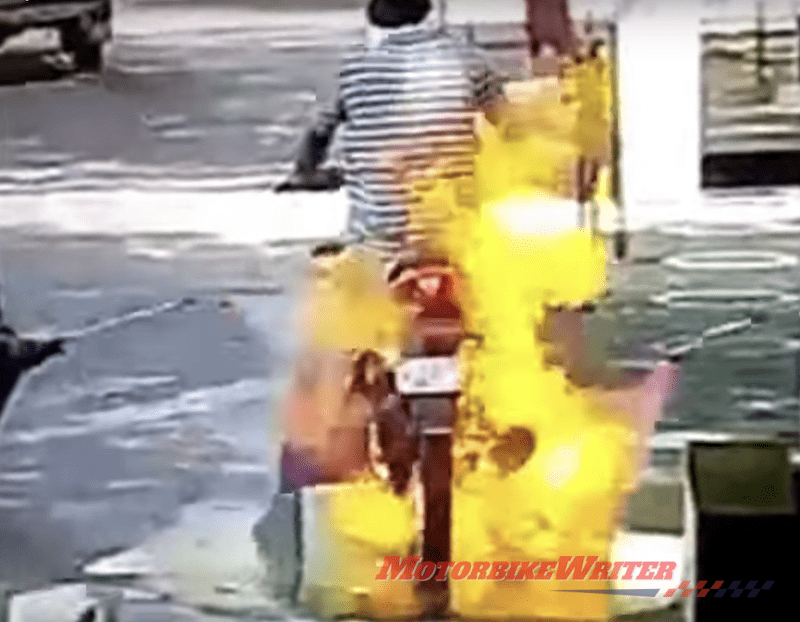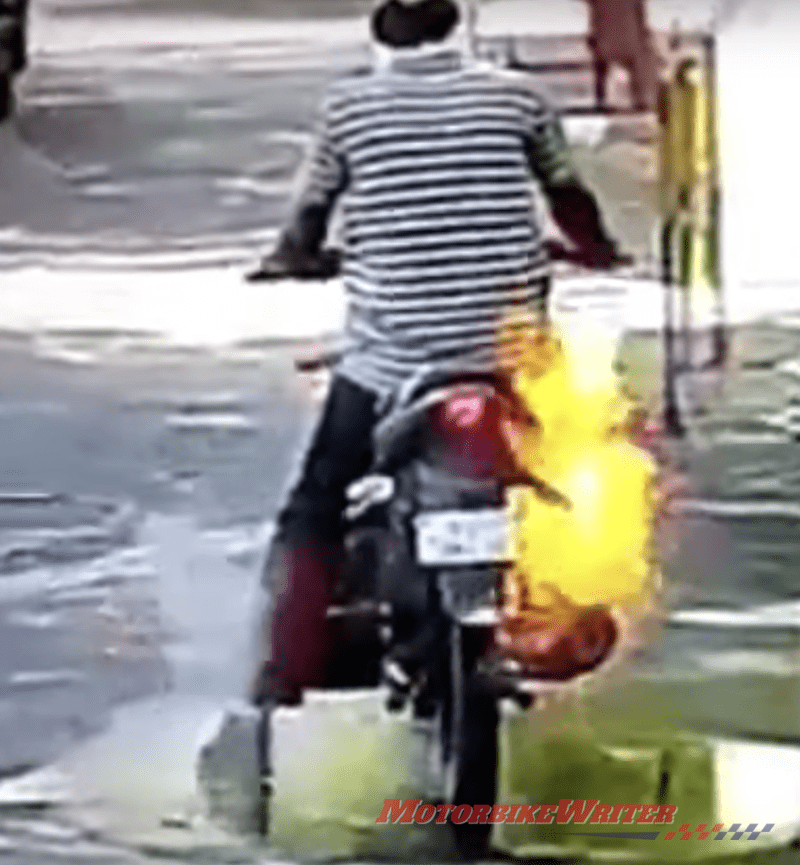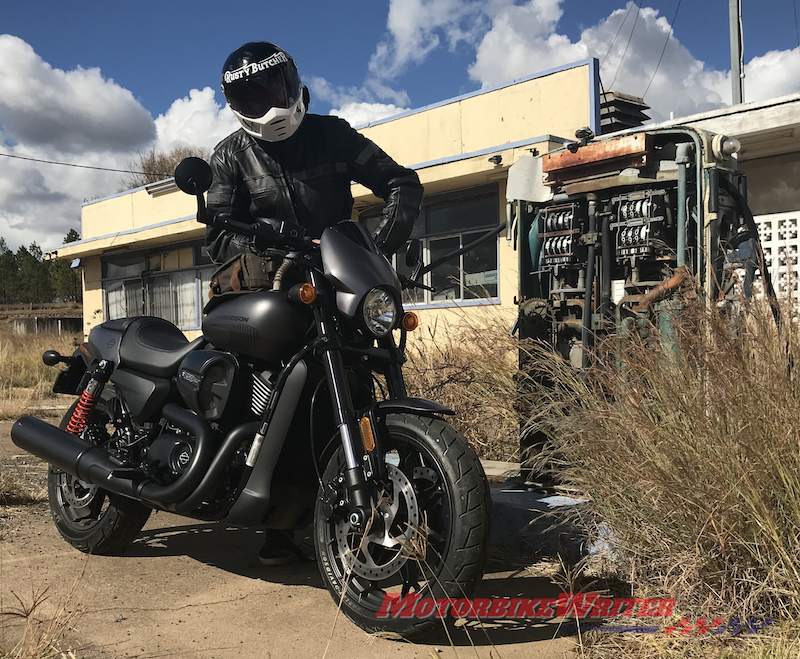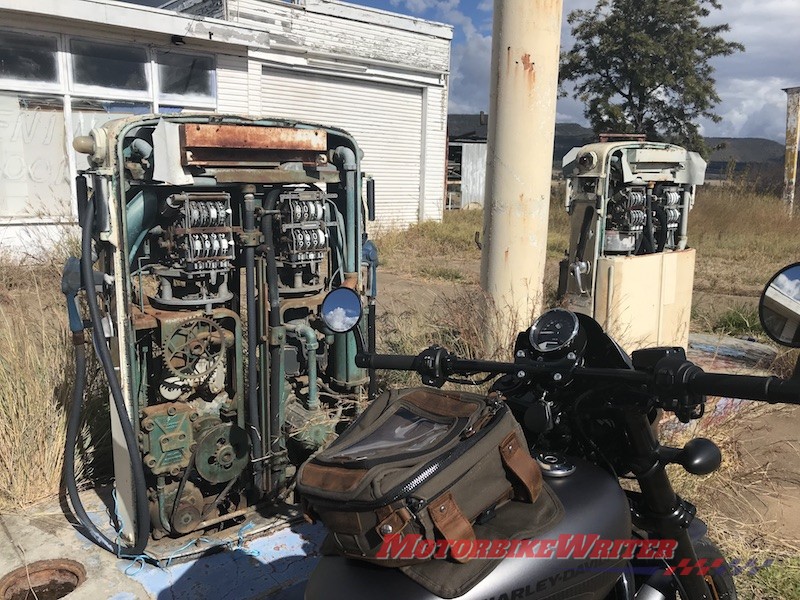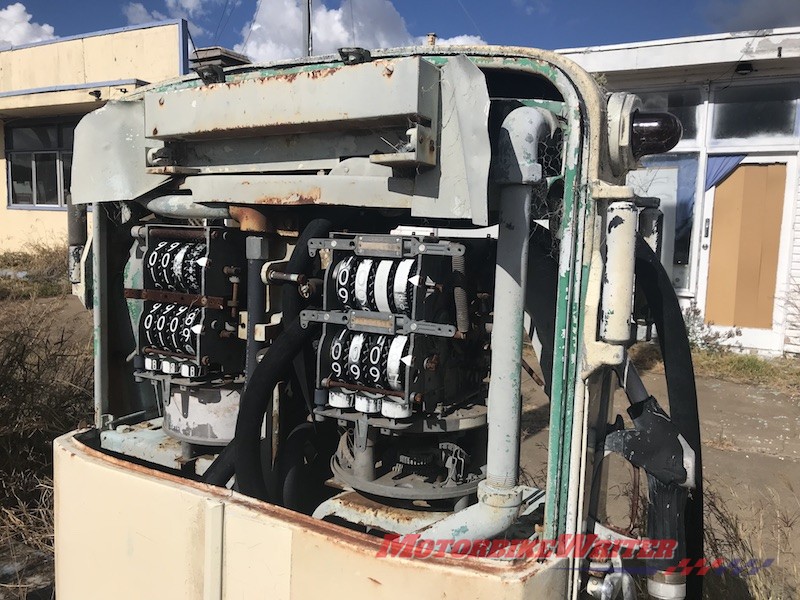An Indian rider has escaped serious injury when his scooter sparked a fireball as it was sanitised at a roadside coronavirus checkpoint.
The health measure is one of many used to try to control the coronavirus infection rate in India which is almost 200,000 with more than 5500 deaths.
Thankfully the rider jumps free, although he initially runs straight back through the flames.
Fireball
Sanitiser has an alcohol base which can burst into flames if sprayed near an open flame or a very hot surface such as an exhaust or a catalytic convertor.
A cat can run at temperatures exceeding 500C. In fact, the more clogged the convertor, the hotter it gets and we expect that could be the case with this scooter.
You will notice that the fireball is sparked on the right side where the exhaust is located.
It’s not actually the scooter that burns. It’s the built-up deposit of spray on the ground.
However, its a timely warning about correctly filling your motorcycle tank.
Overfill and you could spill fuel on to the exhaust or catalytic convertor with disastrous consequences such as in this video.
Once again, this happened in India where the rider on the KTM 200 Duke allows the service station attendant to fill the tank while he is sitting on board.
That wouldn’t happen in Australia where most servos insist you get off your motorcycle.
In the video, the attendant overfills or the nozzle shut-off fails and the petrol spills and bursts into flames instantly.
The rider suffered burns to both legs and his right arm.
Overfilling motorcycle tank
Overfilling a motorcycle fuel tank is easy to do.
Cars have long filler necks which bubble up when the tank is near full and shuts off the nozzle.
There is rarely a splash back on the first “click” because the fuel has a long way to travel up the filler neck.
However, motorcycles either have a short filler neck or none at all. So the nozzle shuts off when the fuel tank is almost full and can easily splash out of the tank opening.
The correct way to fuel your bike, is to shove the nozzle down into the tank, not leave the tip near the top.
That way, the nozzle will shut off before the tank is full and near the fuel cap opening.
You then pull the nozzle back to the edge of the opening and slowly fill the tank by watching and listening.
Of course, you should first switch off the ignition, get off your bike and put it on the side stand or centre stand.
However, you need to be able to listen to the fuel gurgling in your tank. That may be difficult while wearing some helmets. I also wear ear plugs, so I take off my helmet and remove at least one ear plug when refuelling.
Squeezing in the most fuel
Some riders believe they fit more fuel in their bike if they put it on the centre stand, but it depends on the bike and the shape of the tank.
However, you really shouldn’t try to squeeze in as much fuel as possible.
Motorcycle tanks have filler recesses, hoses and an air gap at the top and will hold more fuel than the volume stated on the technical specifications.
That gap is there to allow the fuel to expand as it heats up. If you fill the gap, the fuel will simply spill out of the breather hose as you ride off.
The motorcycle tank is usually placed above the engine and in direct sunlight so they are susceptible to fuel expanding with the heat which pushes more fuel out of the breather hose.
Inaccurate pumps
If you haven’t totally filled up but the bowser suggests you’ve put in more than you believe is possible, it could be an inaccurate pump and you should lodge a complaint.
According to the National Measurement Institute (NMI), about one in a dozen complaints about inaccurate pumps is found to be correct.
They have trade measurement inspectors throughout Australia who are authorised to visit a place of business “at any reasonable time of day’’ as part of a trade measurement compliance inspection program.
Industry sources say servos are usually not fined, but warned on first offences.
So riders should be skeptical of bowser readings. Buy from reputable fuel suppliers and if you think you have a genuine complaint notify the authorities.
(Consumers can make complaints by ringing the national NMI hotline on 1300 686 664 or via email.


